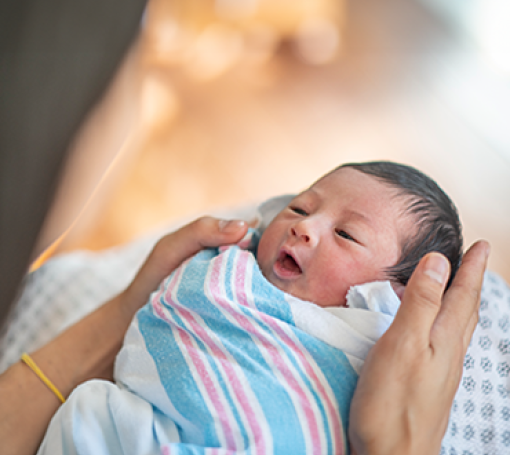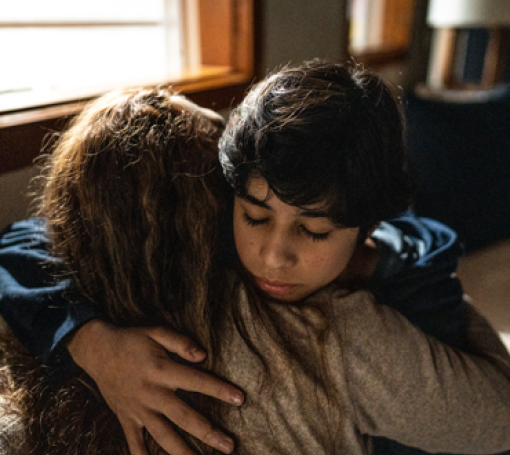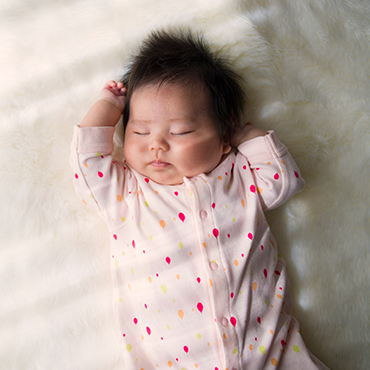As parents and caregivers, one of our most important jobs is to keep our babies safe. When it comes to sleep, there are some simple but powerful steps we can take to help protect babies from Sudden Infant Death Syndrome, or SIDS. In this blog, we'll talk about some easy-to-follow sleep tips to help keep babies safe while they rest.
What is SIDS?
SIDS is when a baby under one year old dies suddenly and without warning during sleep. SIDS occurs most commonly between the ages of 1 month and 4 months. It’s very rare, but it’s something every parent should know about so they can help keep their baby safe. While doctors do not yet understand all the factors that cause it to occur, we believe it is a combination of genetic predisposition and environmental risk factors. Some babies may have problems with how their brain controls breathing or waking up. Because we don’t yet know how to identify which babies may be genetically at risk, we encourage all families to follow these sleep tips that research has shown lower the chances of SIDS happening.
The Importance of Safe Sleep
One of the best ways to prevent SIDS is to create a safe sleeping environment for your baby. Parents who pay close attention to how and where their baby sleeps can keep them both safe and comfortable. Let's look at some important safe sleep practices.
1. Always Lay Babies Down on Their Backs
This is one of the most important things you can do. Babies should always be placed on their backs to sleep, whether they’re taking a nap or sleeping overnight. This position is the safest and has been shown to greatly reduce the risk of SIDS. Sleeping on the stomach or side can put babies at higher risk for suffocation.
2. Use a Firm Mattress
The mattress your baby sleeps on should be firm, flat, and covered with a fitted sheet. Soft surfaces, such as soft mattresses, pillows, or blankets, can increase the risk of suffocation. A firm mattress helps reduce the risk that your baby could roll into a dangerous position.
3. Keep the Crib Free of Toys and Blankets
While it might seem cute to place stuffed animals or blankets in your baby’s crib, these items can be dangerous. Babies can accidentally roll into these objects and have trouble breathing. It’s best to keep the crib empty except for your baby and their mattress. If you want to keep your baby warm, dress them in a wearable blanket, also known as a sleep sack. This will help keep your baby cozy without the risk of a loose blanket covering their mouth.
4. Avoid Smoking Around Your Baby
If you smoke, it’s important to keep your baby away from smoke, even secondhand smoke. Only smoke outside and wear a smoking jacket that you can remove. The goal is to keep your home and car smoke-free because babies who are exposed to smoke are at a much higher risk of SIDS. Know that Washington state offers several free resources to support you when you are ready to quit smoking.
5. Make Sure Your Baby Is Not Too Hot
Overheating can also increase the risk of SIDS. Dress your baby in light, breathable clothing and avoid covering them with too many blankets. You can check if your baby is too hot by feeling their neck or back. If they feel warm or sweaty, remove a layer of clothing. The room temperature should also be comfortable, around 68 to 72 degrees Fahrenheit (20-22°C).
6. Offer a Pacifier at Nap Time and Bedtime
Giving your baby a pacifier when they go to sleep can help reduce the risk of SIDS. Make sure to offer the pacifier once breastfeeding is well established (usually after the first month). If the pacifier falls out during sleep, there is no need to put it back in. Just let your baby sleep peacefully.
7. Sleep in the Same Room, Not the Same Bed
For the first 6 months, it’s recommended that babies sleep in the same room as their parents, but not in the same bed. This is called “room-sharing.” Having your baby sleep in the same room makes it easier for you to monitor them and respond to any needs they may have during the night. However, bed-sharing (when a baby sleeps in the same bed as a parent) can increase the risk of suffocation and other dangers, so the American Academy of Pediatrics recommends avoiding if possible.
We recognize that many cultural and financial factors may influence parents’ decisions to share a bed with their infant. If you do, please limit the risk by not co-sleeping if either parent is extremely tired or sleep-deprived, or if either adult has consumed alcohol or sedating medication.
8. Keep Your Baby's Sleep Area Safe
When setting up your baby’s crib, make sure the area is free from any hazards. Keep the crib away from windows, cords, and other potential dangers like heavy furniture that could fall over. The baby’s crib should meet current safety standards, so check for the latest guidelines.
9. Breastfeeding Is Helpful
Breastfeeding is another way to reduce the risk of SIDS. Babies who are breastfed have a lower chance of SIDS than those who are exclusively formula-fed. Breastfeeding helps your baby’s immune system and provides them with important nutrients that help them grow strong.
We know that not all moms can breastfeed. Ultimately, fed is best, and formula supplementation is safe. Research shows there is benefit for both mom and baby to provide at least some breast milk for as long as possible throughout the first year of life.
10. Regular Pediatrician Visits
It’s important to make sure your baby is growing healthy and strong, and regular visits to the pediatrician will help keep track of their health and development. Your pediatrician can give you personalized advice about your baby’s sleep and other ways to keep them safe.
Conclusion
Taking the time to create a safe sleep environment for your baby can help prevent SIDS and ensure your baby sleeps soundly and safely. By following these safe sleep tips—like always placing your baby on their back to sleep, using a firm mattress, and avoiding soft bedding—you are helping to protect your baby and promote their overall health and well-being. Remember, it’s also important to stay in touch with your pediatrician and follow their advice to keep your baby safe as they grow.
Being a parent or caregiver means making choices that support your baby’s health, and safe sleep practices are one of the most important ways to protect your baby during their early years. Let’s work together to raise awareness about SIDS and give babies the safest possible start to life!
Keep Reading
View All Posts
Helping Kids Breathe Easier
By checking asthma control at every well care visit, we can identify changes early and make sure each child has the support they need to breathe comfortably and stay active.

Protecting Your Newborn from Hepatitis B
Learn why the birth dose of the hepatitis B vaccine matters for every baby.

Community Support for Youth Suicide Prevention
Learn how families can recognize warning signs, foster open communication, and create a supportive environment to help prevent suicide among teens.

